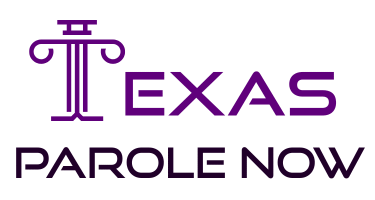A child’s laughter echoes through a living room, the glow of a tablet illuminating their face as Mickey Mouse dances across the screen. It’s a universal scene of modern family life—until tragedy strikes, turning trust into unimaginable grief and sparking a high-stakes Disney wrongful death lawsuit Disney+ now shaking the entertainment empire.
This isn’t about a theme park ride malfunction or a resort accident. Instead, this landmark case probes whether Disney+ content itself—specifically, its portrayal of self-harm—allegedly contributed to a minor’s death, forcing courts to confront a chilling question: Can streaming platforms bear liability for real-world harm caused by their algorithms?
The Incident That Ignited Legal Fire
In early 2024, a Florida family filed a wrongful death lawsuit against The Walt Disney Company. The suit centers on their 12-year-old daughter, who died by suicide after repeatedly viewing a Disney+ series containing graphic depictions of self-harm. According to court documents, the minor accessed the show through autoplay recommendations after watching age-appropriate content.
Crucially, the lawsuit argues Disney+ failed to:
- Implement adequate content warnings or parental gatekeeping for mature themes
- Restrict algorithmic promotion of harmful material to minors
- Heed psychologists’ warnings about the show’s potential impact on vulnerable youth
Disney’s Motion to Dismiss (filed May 2024) contends Section 230 of the Communications Decency Act immunizes platforms from liability for user-selected content. But the plaintiffs cite a critical exception: claims involving “aiding and abetting” or “material contribution” to harm.
Read Also: The Ashcroft Capital Lawsuit
Core Legal Arguments at a Glance
| Plaintiffs’ Allegations | Disney’s Defenses |
|---|---|
| Negligent content curation | Section 230 immunity |
| Algorithm-driven harm promotion | First Amendment protection |
| Inadequate parental safeguards | Absence of “duty of care” precedent |
| Violation of child safety laws | User-controlled viewing choices |
The Novel Legal Frontier: Algorithms as “Digital Negligence”
This case ventures beyond traditional wrongful death claims. Historically, media companies avoided liability for viewer actions under the First Amendment. But the plaintiffs’ legal team—led by prominent child safety attorney Rebecca Stevens—argues Disney’s algorithmic amplification of harmful content creates fresh liability:
“When Disney’s code actively pushes destructive material to children, bypassing parental controls, it functions as a digital supplier of dangerous content—not a passive platform.”
Disney counters that its content ratings comply with industry standards. Yet internal emails (obtained via discovery) reveal executives debating whether the controversial series warranted higher restrictions due to “copycat risk.”
The Broader Industry Earthquake
A ruling against Disney could rewrite rules for all streamers:
- Netflix faces similar scrutiny over teen drama 13 Reasons Why
- TikTok’s algorithm is under DOJ investigation for youth mental health impacts
- Meta settled 2023 lawsuits alleging Instagram promoted eating disorders
Table: Streaming Safety Measures Comparison
| Platform | Minor Safeguards | Mature Content Barriers |
|---|---|---|
| Disney+ | PIN-protected profiles | Limited episode-specific warnings |
| Netflix | Profile maturity levels | “Skip Intro” bypasses warnings |
| Max | Child-only profiles | Persistent on-screen ratings |
Where the Case Stands Today
As of July 2025, Florida’s 11th Circuit Court denied Disney’s motion to dismiss. Judge Anita Rodriguez’s ruling declared: “Section 230 doesn’t shield active content promotion that foreseeably causes harm.” The discovery phase now proceeds, with trial tentatively set for Q1 2026.
Potential outcomes ripple beyond compensation:
- Regulatory Tsunami: FTC could mandate “algorithmic transparency” laws
- Content Purge: Streamers may remove controversial shows preemptively
- Tech Redesign: Default “child-safe” modes and enhanced parental alerts
Key Takeaways for Families and Streamers
- Audit your child’s viewing history monthly—algorithm patterns reveal risks
- Enable PIN locks on every mature-rated profile, not just kids’ accounts
- Demand granular controls from platforms—per-episode blocks, not just show-level
Disney’s magic was built on trust. This case will determine whether its digital evolution betrayed that covenant. As algorithms increasingly curate childhood experiences, this lawsuit could force Silicon Valley to choose between engagement metrics and ethical responsibility.
Frequently Asked Questions
Q: How could Disney be liable for a viewer’s personal actions?
A: The suit argues Disney’s active algorithmic promotion of harmful content—not just its availability—created unreasonable risk. If proven, this “duty of care” could establish new precedent.
Q: Does this mean all shows with mature themes will disappear?
A: Unlikely. The case centers on inadequate safeguards for minors, not content bans. Expect stricter age-verification and personalized warnings instead.
Q: Could Disney+ subscriptions become age-restricted?
A: Possibly. Platforms may require verified parental consent for accounts used by minors, similar to Europe’s GDPR-K rules.
Q: What should parents do right now?
A: 1) Review auto-play settings (disable them), 2) Set PINs on all profiles, 3) Discuss emotional resilience with children exposed to intense themes.
Q: Are other streamers involved in this lawsuit?
A: Currently no, but Netflix and Apple TV+ face separate suits. A Disney loss would catalyze copycat litigation industry-wide.
Q: When will the trial conclude?
A: Estimates suggest late 2026, though settlements often occur before high-profile trials.
Q: Could this change how algorithms work?
A: Absolutely. Platforms may need to:
- Prioritize safety over engagement metrics
- Allow opt-outs of recommendation engines
- Disclose content-promotion criteria
You May Also Like: The Augusta Precious Metals Lawsuit

